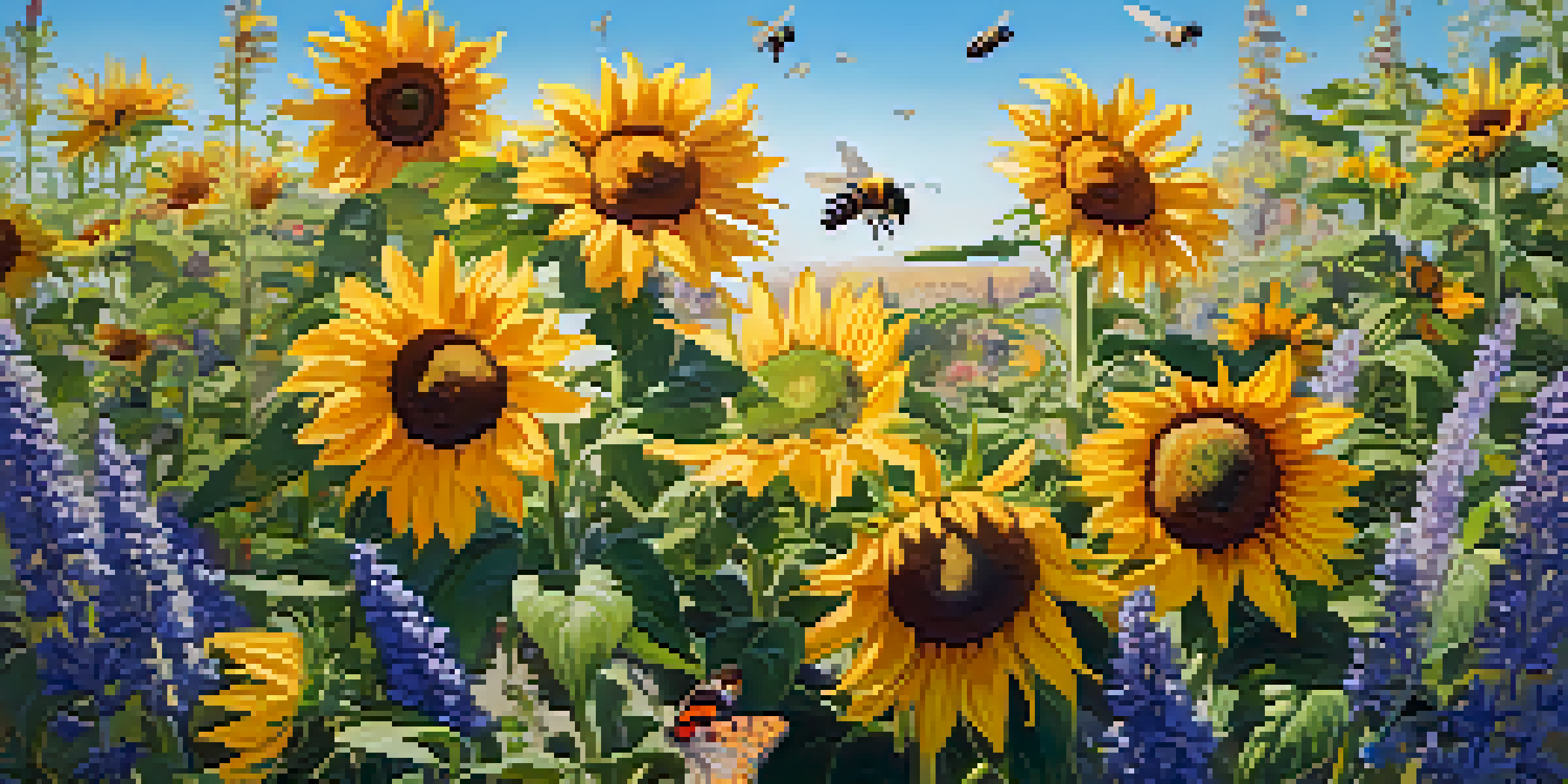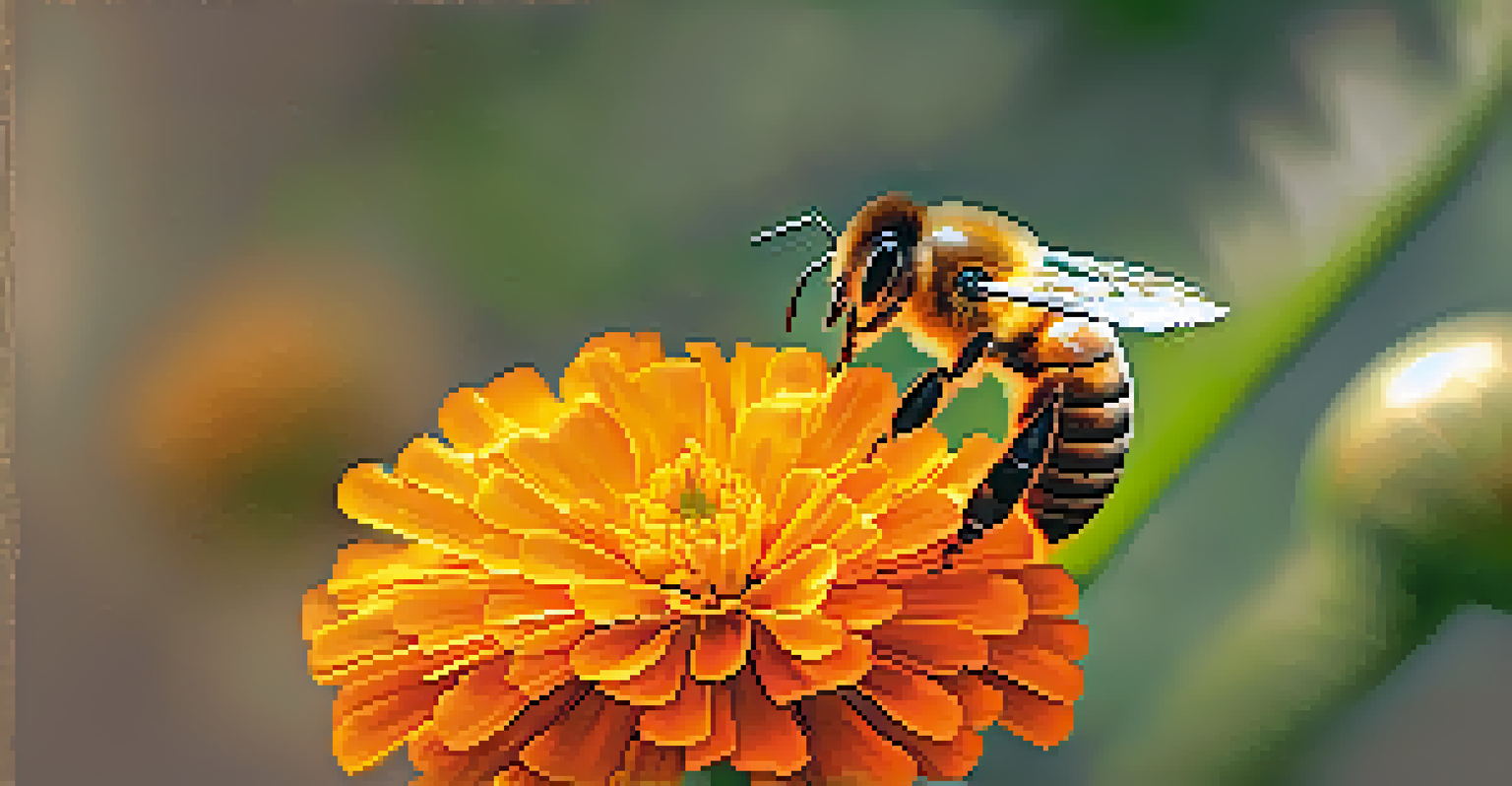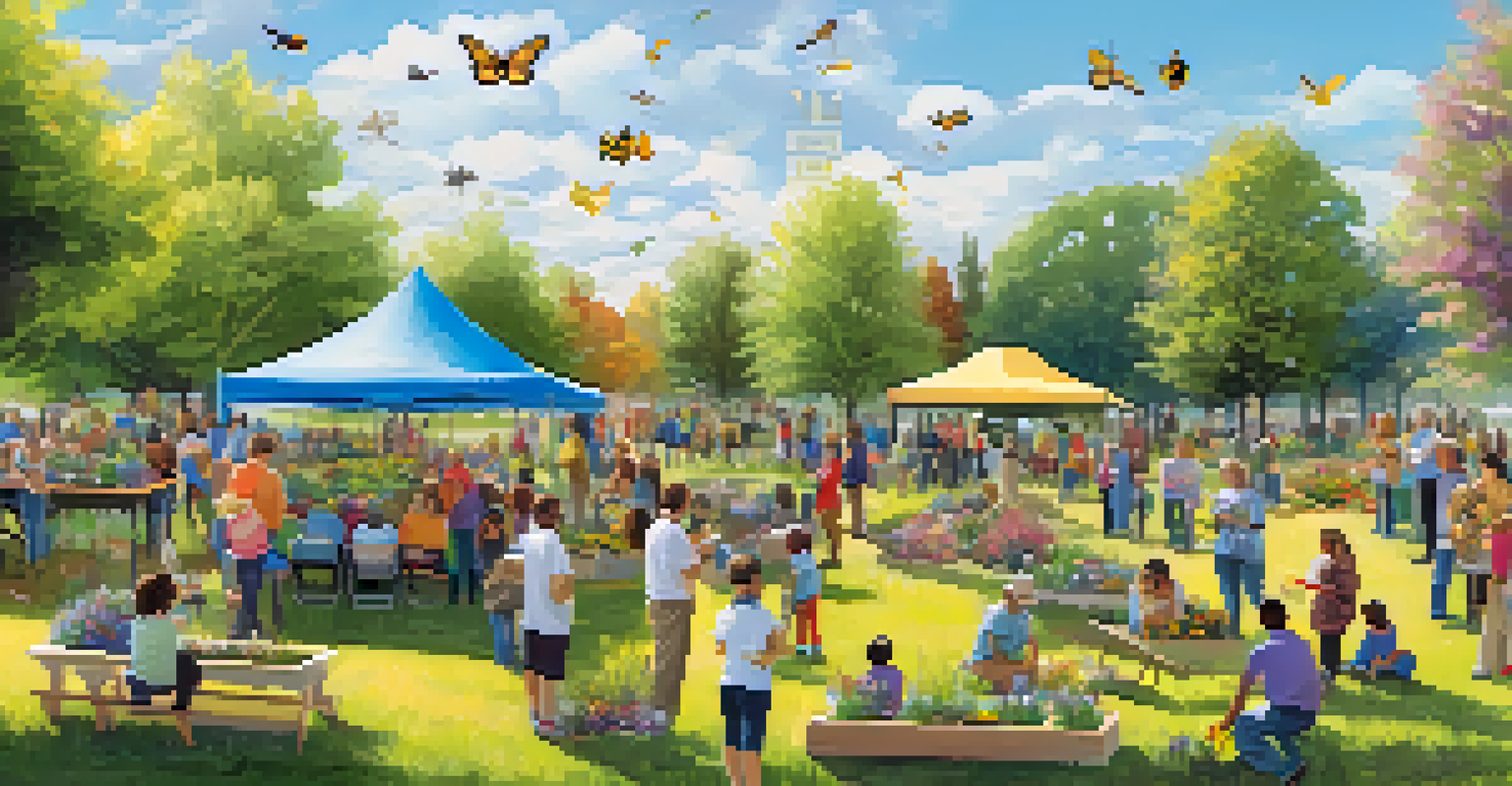The Significance of Pollinators in Plant Conservation Efforts

Understanding Pollinators and Their Role in Ecosystems
Pollinators, including bees, butterflies, birds, and bats, are crucial for the reproduction of many flowering plants. They facilitate the transfer of pollen, which is essential for fertilization, leading to fruit and seed production. Without these little helpers, many plants would struggle to reproduce, directly impacting biodiversity.
If bees disappeared off the face of the earth, man would only have four years left to live.
In fact, it’s estimated that around 75% of the world’s flowering plants rely on animal pollination to thrive. This symbiotic relationship not only benefits the plants but also supports entire ecosystems, providing food and habitat for countless species. Understanding this interconnectedness is vital for effective conservation efforts.
Moreover, pollinators contribute significantly to agricultural productivity. Many crops, such as apples, almonds, and tomatoes, depend on pollinators for optimal yields. Therefore, protecting these creatures is not just about preserving nature but also about ensuring food security for future generations.
The Decline of Pollinator Populations: A Growing Concern
Unfortunately, pollinator populations are declining at an alarming rate due to various factors. Habitat loss, pesticide use, climate change, and diseases are all contributing to this issue. As these populations dwindle, the plants that depend on them for reproduction face dire consequences.

For instance, the decline in bee populations has been linked to a decrease in the diversity of flowering plants. This not only affects the plants but also the animals that rely on those plants for food and shelter. The loss of biodiversity can create a domino effect, disrupting entire ecosystems.
Pollinators Boost Plant Diversity
Pollinators are essential for the reproduction of approximately 75% of flowering plants, directly supporting biodiversity.
Conservationists are increasingly concerned about this trend. Addressing the decline of pollinators is essential for maintaining healthy ecosystems and ensuring that plant species continue to thrive. Understanding the threats they face is the first step in formulating effective conservation strategies.
The Role of Plant Conservation in Supporting Pollinators
Plant conservation efforts play a significant role in creating a conducive environment for pollinators. By protecting native plants, we ensure that pollinators have access to the food sources they need to survive and thrive. This, in turn, supports the overall health of ecosystems.
The future will be shaped by the choices we make today, especially when it comes to protecting our pollinators.
Native plants are often better suited to local pollinators, providing them with the nectar and pollen they require. By planting native species in gardens, parks, and agricultural lands, we can create habitats that attract and sustain pollinator populations. This symbiotic relationship highlights the importance of plant conservation in broader ecological efforts.
Additionally, restoring habitats that have been degraded or destroyed can greatly benefit pollinators. Efforts such as reforestation and wetland restoration not only help revive plant populations but also provide essential habitats for pollinators. It's a win-win situation for both plants and their pollinators.
Community Involvement in Pollinator Conservation
Community involvement is crucial in promoting pollinator conservation. Local initiatives can raise awareness, educate individuals about the importance of pollinators, and encourage actions that support their survival. Whether it's organizing planting events or creating pollinator gardens, every effort counts.
Schools and community organizations can play a key role by integrating pollinator education into their programs. Engaging young minds with hands-on activities can foster a sense of responsibility toward nature, encouraging future generations to become stewards of the environment. These grassroots efforts can lead to significant positive changes.
Decline Threatens Ecosystems
The alarming decline in pollinator populations due to habitat loss and pesticides poses a significant threat to ecosystems and food security.
Moreover, local governments can support initiatives by providing resources and creating policies that promote pollinator-friendly practices. By working together, communities can create a network of support that enhances conservation efforts. Collective action is a powerful tool in the fight for pollinator survival.
Best Practices for Creating Pollinator-Friendly Habitats
Creating pollinator-friendly habitats is easier than one might think. Start by incorporating a variety of native plants that bloom at different times throughout the year. This ensures that pollinators have a steady food source from spring through fall, supporting their life cycles effectively.
Avoiding the use of pesticides is another critical aspect of creating a welcoming environment for pollinators. Many pesticides are harmful to these beneficial insects, so opting for organic methods or natural pest control can safeguard their populations. Small changes in gardening practices can make a big difference.
Additionally, providing water sources, such as shallow dishes or bird baths, can attract pollinators to your garden. Offering shelter through diverse plant structures or leaving areas of bare ground for nesting can also enhance habitat quality. These simple practices can transform any space into a thriving ecosystem for pollinators.
The Economic Importance of Pollinators in Agriculture
Pollinators are not only vital for ecological balance but also for the economy. The agricultural sector heavily relies on pollinators for the production of many fruits, vegetables, and nuts. It's estimated that pollinators contribute over $15 billion annually to U.S. crop production alone.
This economic value underscores the importance of protecting pollinator populations. Farmers who invest in pollinator-friendly practices often see increased yields and healthier crops. By recognizing the financial benefits, more agricultural stakeholders can be encouraged to support conservation efforts.
Community Actions Support Pollinators
Community involvement in planting native species and educating others can significantly enhance efforts to conserve pollinator habitats.
Moreover, promoting sustainable agricultural practices can lead to long-term economic gains. This includes integrating crop rotation, reducing chemical usage, and fostering biodiversity on farms. By valuing pollinators, we can ensure a more resilient agricultural system that benefits both nature and the economy.
Future Directions for Pollinator Conservation Efforts
Looking ahead, it’s essential to prioritize research and education in pollinator conservation. Continued studies can help us better understand the needs and behaviors of different pollinator species, allowing for more tailored conservation strategies. Education programs can empower communities to take action and advocate for pollinator-friendly practices.
Collaboration among scientists, policymakers, and community members is also vital. By sharing knowledge and resources, we can develop more effective initiatives that address the challenges facing pollinators. This united approach can drive significant progress in conservation efforts.

Finally, advocating for policy changes that protect pollinator habitats is crucial. Supporting legislation that promotes sustainable agricultural practices and habitat restoration can create a more favorable environment for these essential species. Together, we can ensure a brighter future for pollinators and the ecosystems they support.